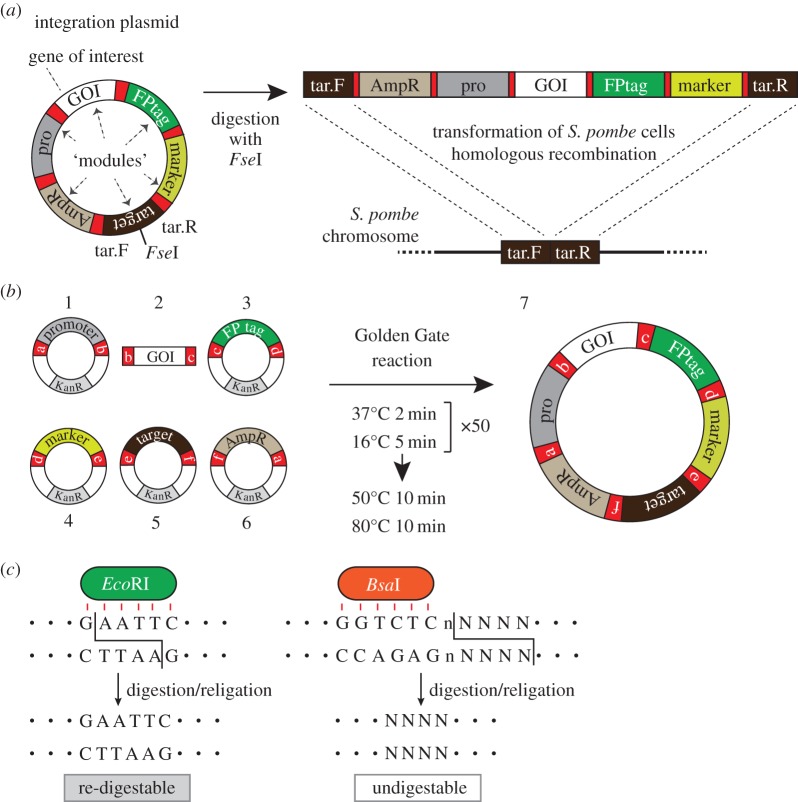Figure 1.
The Golden Gate method to create integration plasmids. (a) A schematic of an integration plasmid. (left) An example of an integration plasmid to express a GOI in fusion with a fluorescent protein (FP) tag under a promoter. A target module comprises tar.F and tar.R regions separated by an FseI restriction site. (right) An integration plasmid can be linearized with FseI, and tar.F and tar.R sequences are targeted to the homologous sequences on the S. pombe chromosome, to induce homologous recombination. (b) A schematic for the Golden Gate reaction. (left) Examples of module elements. Modules are given either as plasmids (1, 3–6) or as PCR products (2). Modules for a promoter module (1), GOI (2), an FPtag (3), a selection marker (4), a target region (5), the vector backbone (6). a–f: cohesive ends to connect modules 1–6 in this order. (right) A reaction protocol for the Golden Gate reaction by the mixture of 1–6 and the resulting circular integration plasmid (7). Each module plasmid (1, 3–6) contains the kanamycin resistance gene (KanR), whereas the final product (integration plasmid, 7) is ampicillin resistant. (c) Unique property of BsaI. (left) EcoRI, a standard restriction enzyme, cleaves its recognition site, therefore digestion and religation can be repeated. (right) By contrast, BsaI has separate sites for recognition (GGTCTC) and digestion (NNNN; any four bases).

